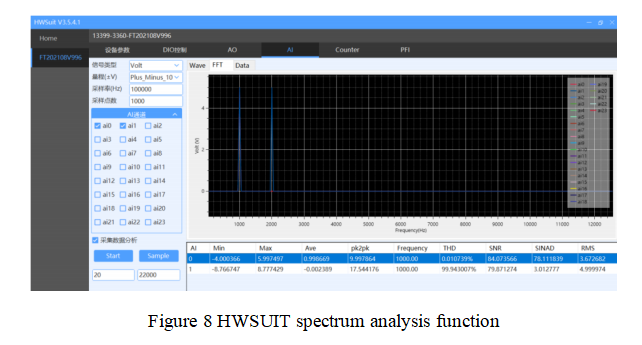Vibration is the phenomenon of an object's moving back and forth around a fixed point. When an object is subjected to an external forces or energy, it vibrates, such as the vibration of a spring, the swing vibration of a pendulum, and the movement of a tire on a bumpy road. Vibration usually consists of periodic movements (of course, there are also random vibration).
The characteristics of vibration include amplitude (the maximum deviation of the vibration), frequency (the number of vibrations per unit time) and period (the time required to complete a full vibration).
For most vibrations, the vibration amplitude is not visible to the naked eye, and there are often multiple frequency components at the same time, which cannot be observed directly. Therefore, the commonly used method of measuring vibration is to collect it indirectly based on accelerometers.
1. Working principle of accelerometers
An accelerometer is a sensor that measures the acceleration of an object, commonly obtaining the magnitude of acceleration by measuring the inertial force of a sensitive mass. According to the different sensitive mechanism, common acceleration sensors are capacitive, piezoelectric, inductive, and strain-type and so on. Among them, piezoelectric accelerometers and MEMS capacitive accelerometers are most widely used.
A piezoelectric accelerometer is operated based on the piezoelectric effect of piezoelectric materials. When a piezoelectric material is deformed in a certain direction under external force, its interior will be polarized, and a sign-inverted electric charge will be generated on its both surfaces; after the external force is removed, it will return to the neutral state, which is called "piezoelectric effect". The structure diagram of the piezoelectric accelerometer is shown in FIG. 2. It includes several main parts such as piezoelectric materials, mass blocks, electrodes, and fixing screws. When there is an external acceleration input, the mass block experiences an inertial force, F=ma, which is applied to the piezoelectric material and generates an electric charge. For example, the piezoelectric material operates in d33 mode, then the charge Q = Cd×V = F×d33. After amplifying the charge signal through the charge amplifier, a voltage signal proportional to the input acceleration can be obtained.
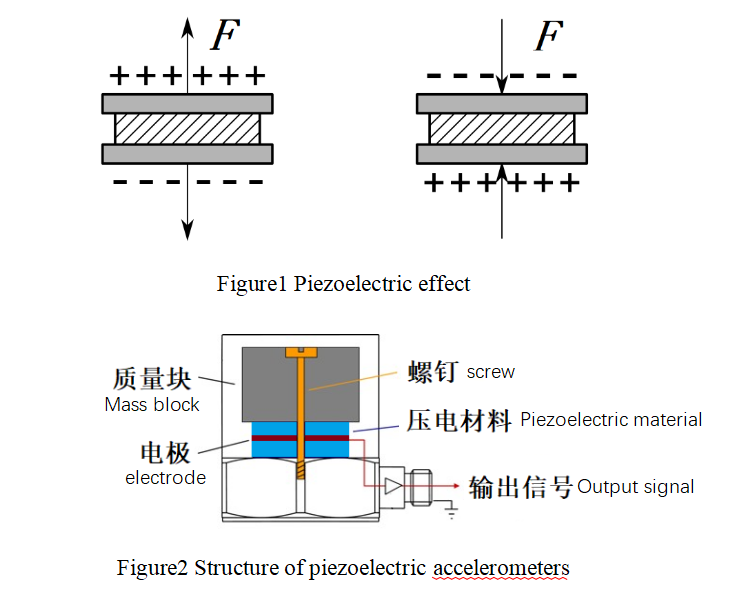
MEMS accelerometers are commonly implemented in batches by semiconductor technology, which has many advantages such as small size, light weight, low power consumption, superior performance, and ease integration and so on. The typical structure model of a MEMS capacitive accelerometer is shown in FIG. 3,the mass block is suspended by the support beam , and the differential capacitances C1 and C2 are formed between the electrodes on the mass block and the fixed electrode. Under the action of acceleration, the mass block will shift, which causing the C1 and C2 capacitance values to change in the opposite directions (one increases, the other decreases).
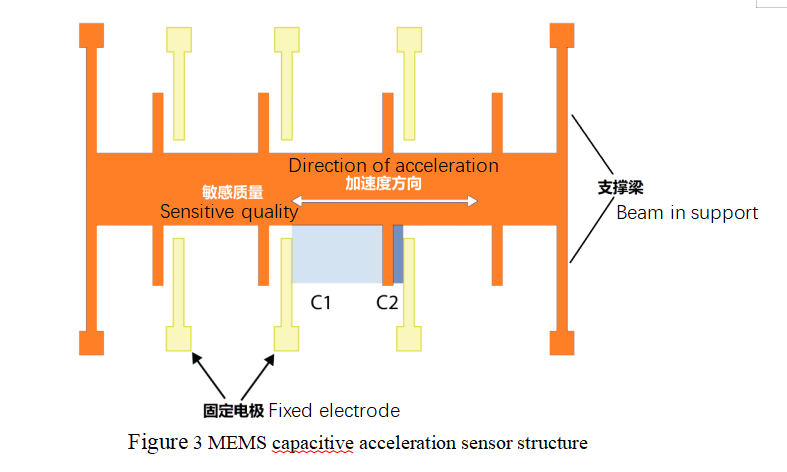
The magnitude of the input acceleration can be obtained by obtaining the variation of the capacitance of C1 and C2 through the signal detection circuit.
2. Accelerometer based vibration measurement
Nowadays, large-scale mechanical equipment has become more intelligent and phisticated , and its internal structure are becoming more and more complex. In the production process, mechanical equipment will be affected by various factors to induce vibration, which has a negative impact on its health, including:
1)Mechanical wear: Frequent vibrations may lead to wear and damage to the internal components of the equipment, shortening the lifespan of the equipment.
2)Functional failure: Vibration may cause the connection of the equipment to be loose, the line to be disconnected, or the component to fall off, thus causing a functional failure or complete failure.
3)Data loss: For devices that store data, strong vibration can lead to data loss or damage, causing an impact on business operations and information security.
4)Instability: Vibration can cause instability in the equipment, making it unable to operate normally or producing inaccurate results.
5)Noise and vibration: Vibrations can cause noise and vibration, which have negative impacts on the comfort and health of workers and the working environment.
Therefore, in order to protect the equipment and ensure its normal operation, appropriate measures are usually taken to reduce equipment vibration, such as the use of damping devices, regular maintenance and inspection of equipment, etc. In addition, real-time vibration monitoring of facilities and equipment can provide critical information to help us understand the running status and health status of equipment, ensure the normal operation of equipment, improve production efficiency and reduce maintenance costs:
1)Fault prediction and prevention: By monitoring the vibration features of equipment, potential failure indicators can be detected in advance, and the life span and maintenance requirements of the equipment can be predicted. This helps to take preventive maintenance measures to avoid equipment failures and downtime, and to improve productivity.
2)Safety and reliability: Vibration monitoring can help detect abnormal vibration of equipment, such as imbalance, looseness, bearing wear and other issues. Timely detection of these problems can prevent accidents caused by equipment failures and ensure the safety of the workplace and the reliability of the equipment.
3)Energy conservation and optimization: By vibration monitoring, equipment energy waste and inefficient operation can be identified. Timelier adjustment and optimization of the operation parameters of the equipment can reduce energy consumption, improve the efficiency and performance of the equipment.
4)Data-driven maintenance: Vibration monitoring provides a large amount of data that can be used to build the health condition model and trend analysis of the equipment. These data can be used to develop more effective maintenance plans, reduce unplanned downtime and maintenance costs.
Vibration monitoring with accelerometers is one of the most commonly used technical means. In the vibration process of mechanical equipment, the vibration impact ,vibration frequency and vibration amplitude of the mechanical work can be effectively monitored by collecting the vibration acceleration signal through the accelerometer. The vibration of different frequency components is revealed by means of spectrum analysis, and the resonance frequency, abnormal vibration category and vibration mode of the equipment are obtained.
3. Case of accelerometer-based vibration monitoring
Aiming at a machine tool, the vibration signal is collected by using a accelerometer, and the time-frequency domain analysis method is used to detect and warn the different running states of the machine tool. The accelerometer is connected to the outer shell of the rotating spindle of the small machine tool to capture the vibration acceleration signal of the equipment. The data acquisition card is connected with the sensor to monitor the different working conditions of the equipment such as idling running, normal processing, parts loosening and load.
By displaying the vibration acceleration time domain signal collected by the accelerometer and using FFT spectrum transformation, the spectrum diagram of the device under different operating states can be obtained. The results are shown in FIG. 4, where the upper part is divided into time domain signal and the lower part is divided into frequency domain signal.
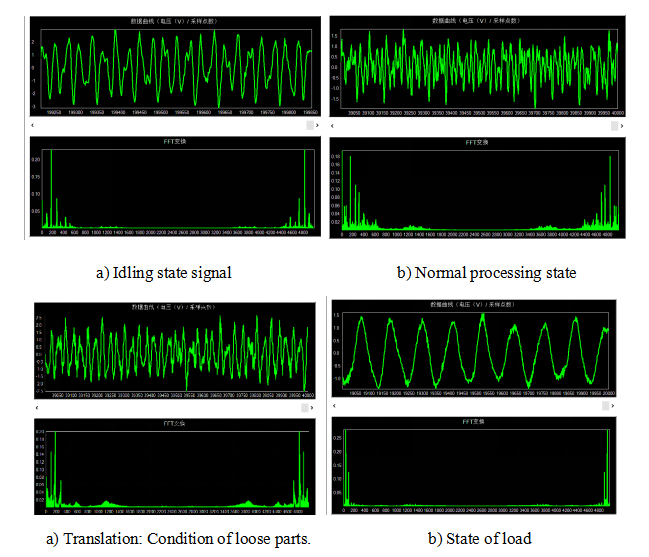
Figure 4 Time-frequency domain signals of machine tools in different machining states
The data collected by the accelerometer can effectively observe the frequency domain characteristics and vibration intensity characteristics of the machine tool processing. Compared with the idling state, the main frequency of vibration is the same in the normal processing state, but the vibration intensity changes, and the spectrum diagram changes significantly. When the structure is loose, the low frequency vibration signal is generated. In the case of load, the main frequency signal frequency is reduced, and the vibration intensity is reduced. According to the above spectrogram, through a large number of tests and AI modeling, the effective identification and early warning of abnormal conditions of machine tools can be realized.
For the above application scenarios, Finetooling Technology provide FT8000 series or FIDAS chassis related hardware solutions, which can help customers to quickly collect and analyze vibration signals.
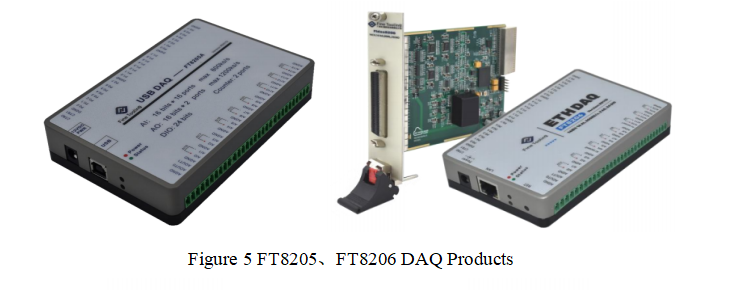
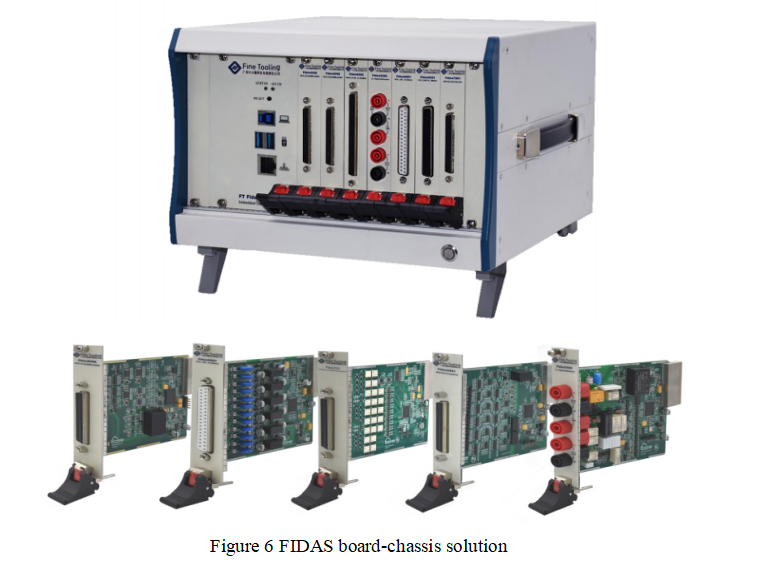
We provide HWSUIT, a free hardware debugging assistant, to access and control our DAQ without any programming by the user. Figure 7 illustrates the HWSUIT debug assistant data acquisition and waveform display functions.
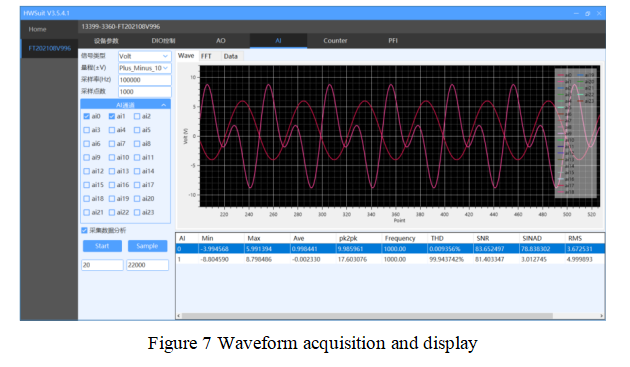
Figure8 The HWSUIT debugging assistant shows the FFT spectrum analysis
